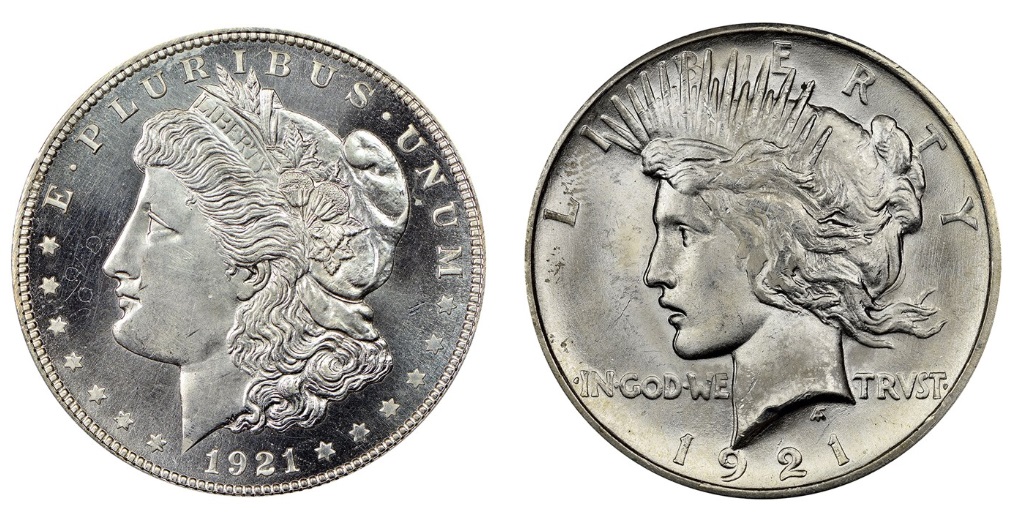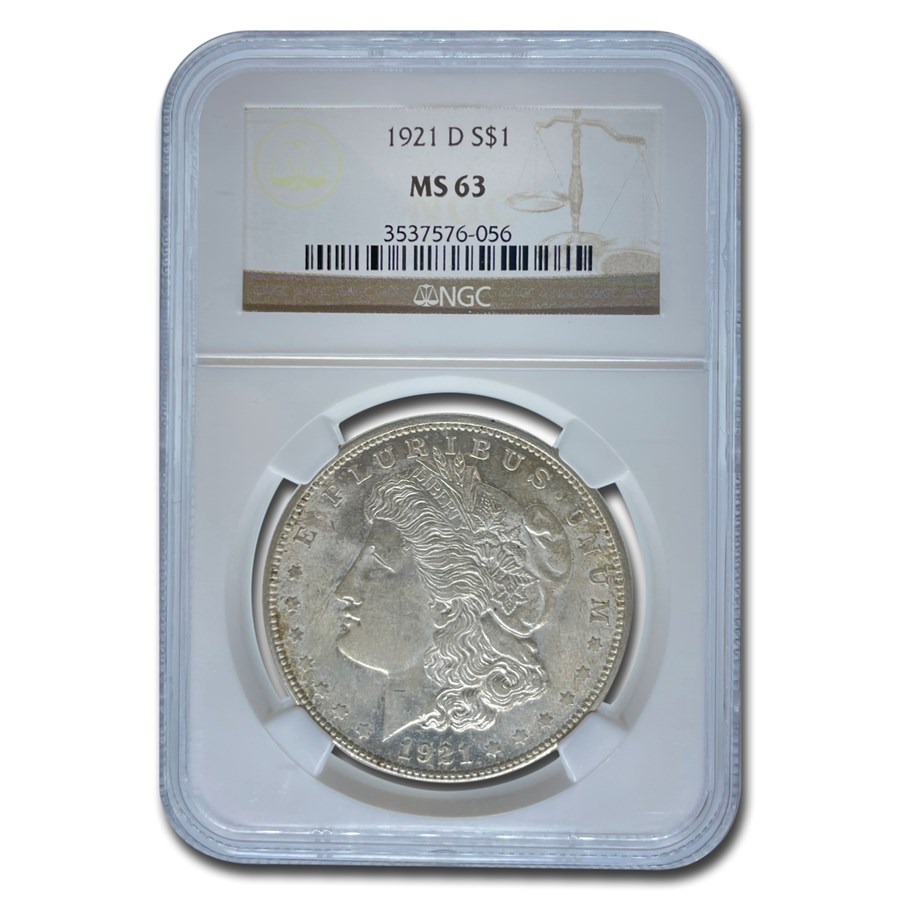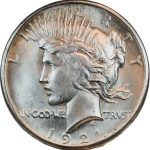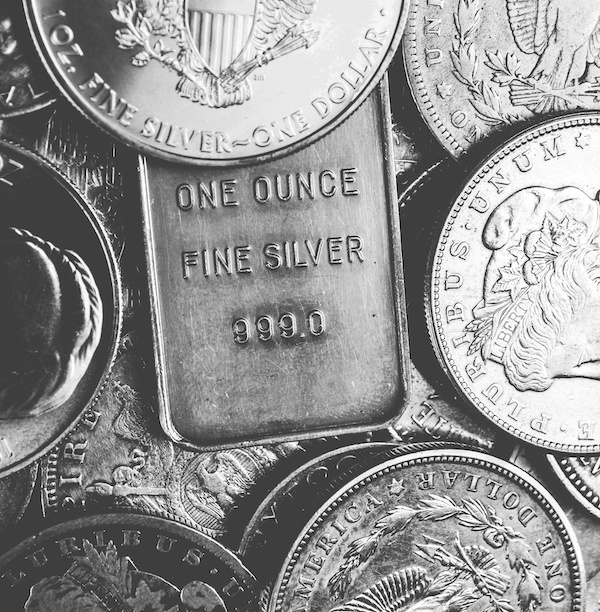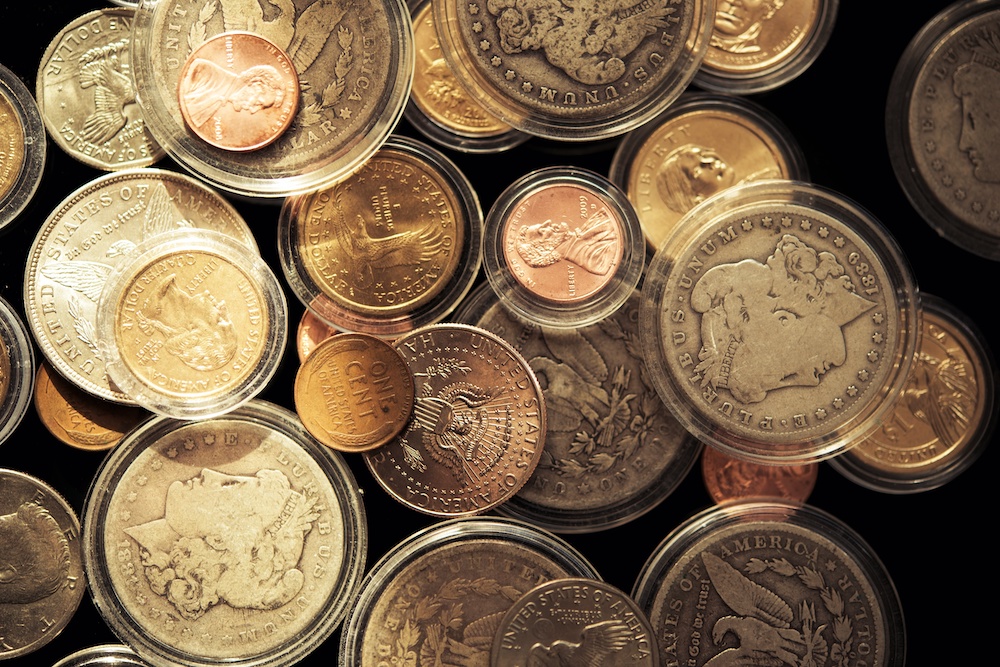The Peace Dollar is one of American history’s most iconic silver coins. It represents the nation’s desire for peace after the devastation of World War I. Minted from 1921 to 1935, this silver dollar holds a special place in the hearts of collectors and investors due to its historical significance, artistic design, and silver content. In this article, we’ll delve into the origins of the Peace Dollar, its design, mint marks, and appeal to collectors and investors.
The Origin of the Peace Dollar
The story of the Peace Dollar begins with the discovery of the Comstock Lode in 1859, one of the richest silver mines in the world. This discovery sparked the Nevada Silver Rush, drawing thousands of miners and flooding the market with silver.
The U.S. government responded with the Coinage Act of 1873, which controversially moved the country from a bi-metallic standard (using both gold and silver) onto a gold standard. This move, often called the “Crime of 1873,” effectively demonetized silver and negatively impacted the mining industry.
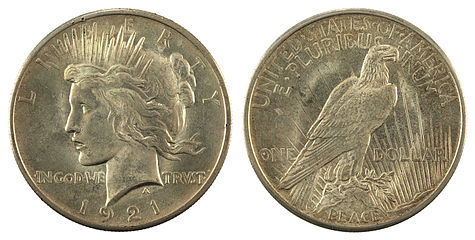
However, after extensive lobbying by silver miners and interests in silver-producing states, the Bland-Allison Act of 1878 reinstated the use of silver in U.S. coinage.
The Act’s passage led to the mass production of Morgan Silver Dollars between 1878 and 1904. By the early 20th century, a surplus of silver and silver coins had accumulated, halting Morgan Dollar production in 1904.
Reintroduction of the Silver Dollar: The Peace Dollar
After World War I, Congress passed the Pittman Act of 1918, which authorized the melting of millions of silver dollars and mandated the minting of new ones.
In 1921, the U.S. Mint briefly resumed production of the Morgan Dollar. However, many in Congress and the Treasury wanted a new design symbolizing peace after the war.
In response, Treasury Secretary Andrew Mellon approved the design of the Peace Dollar, and the first coins were struck in late 1921.
The Peace Dollar was minted from 1921 to 1935 at the Philadelphia, Denver, and San Francisco Mints, with mintage numbers varying yearly. It became the last silver dollar produced for circulation in the United States.
Peace Dollar Design: A Triumph of Artistry
Italian-American sculptor Anthony de Francisci designed the Peace Dollar. At just 34 years old, de Francisci won a coin design competition. The coin symbolizes the nation’s desire for peace after the war. The obverse features Lady Liberty in profile, with flowing hair and a radiant crown, symbolizing freedom and hope. The inscription “LIBERTY” spans the top of the coin, while “IN GOD WE TRUST” appears below Liberty’s profile, along with the year of minting.
The reverse shows a depiction of a Bald Eagle resting on a rock, holding an olive branch—a universal symbol of peace. Rays of sunlight extend from behind the eagle, signifying a new era of peace and prosperity. The word “PEACE” is inscribed at the bottom, with “UNITED STATES OF AMERICA” and “E PLURIBUS UNUM” surrounding the top. The denomination “ONE DOLLAR” is also prominently featured on the reverse.
Peace Dollar Mint Marks and Rarity
The minting of Peace Dollars occurred in three locations: Philadelphia (no mint mark), Denver (D), and San Francisco (S). The mint mark appears on the reverse, just above the tip of the eagle’s wings. The 1921 Peace Dollar, minted in high relief, is one of the most sought-after coins in the series due to its unique design.

Other key dates include the 1928 Peace Dollar, which has the lowest mintage of any coin in the series, and the 1934-S Peace Dollar, which collectors highly covet.
Key dates and rarities within the Peace Dollar series include:
- 1921 Peace Dollar: This inaugural issue’s high-relief design makes it one of the most sought-after coins in the series.
- 1928 Peace Dollar: Known as the lowest-mintage Peace Dollar, it is among the most valuable in high-grade conditions.
- 1934-S Peace Dollar: The San Francisco Mint produced fewer Peace Dollars in 1934, and this issue is particularly valuable in higher grades.
How Much is a Peace Silver Dollar (1921-1935) Worth?
The value of a Peace Dollar can vary significantly based on its condition, rarity, mint mark, and year. Here’s a general breakdown of prices:
| Condition/Grade | Description | Value |
| Cull (Heavily Worn/Circulated) | Cull Peace Dollars show heavy wear with visible damage and are sold primarily for their silver content. | $30 to $35 |
| Good (G) to Very Good (VG) | Coins in Good condition will be more worn, with major details faded or missing but still identifiable. | $35 to $45 |
| Fine (F) to Very Fine (VF) | Coins with more visible detail, but moderate wear on high points. The design will be clear but not sharp. | $45 to $65 |
| Extremely Fine (XF) to About Uncirculated (AU) | Coins show slight wear, especially on the highest points. Much of the luster may remain. | $55 to $100 |
| Mint State (MS60 to MS63) | These are uncirculated coins, with no wear but possibly some bag marks or other minor imperfections. | $100 to $200 |
| Mint State (MS64 to MS65) | Higher-grade uncirculated coins with strong luster, minimal marks, and attractive eye appeal. | $150 to $300 |
Key Dates
- 1921 High Relief Peace Dollar: $100+ in circulated condition, with uncirculated examples fetching thousands
- 1928 Peace Dollar: $200+ in circulated condition, much higher for mint state coins
- 1934-S Peace Dollar: $100+ in circulated condition, significantly higher in uncirculated grades
- 1922 High Relief (Philadelphia Mint): These are some of the rarest Peace Dollars, with only a small number known to exist. Depending on condition, these can sell for $10,000 to $100,000+ at auctions.
- 1924-S Peace Dollar: Minted at the San Francisco Mint, this coin is scarcer in higher grades. In AU condition the 1924-S is valued from $200 to $250 and can fetch $300 and up in MS60 or higher.
Grading is essential in determining the value of a Peace Dollar, as higher-quality coins in mint state command premiums in the market.
Collecting Peace Dollars
Collectors are drawn to Peace Dollars for several reasons. First, the coin’s historical context—minted to celebrate peace after World War I—makes it a symbol of a pivotal time in history. Additionally, with only ten years of production (1921–1935), completing a full set of Peace Dollars is achievable for many collectors. The design by Anthony de Francisci also appeals to art lovers, as it represents a departure from more traditional Liberty designs found on previous U.S. coinage.
Errors and Varieties
Some 1922 Peace Dollars exhibit die cracks, double die errors, or other minting anomalies, which can increase their value. 1922 Double Die Reverse (DDR) varieties are highly sought after by collectors and can command significantly higher prices.
Investing in Peace Dollars
For investors, Peace Dollars offer intrinsic value due to their silver content. Composed of 90% silver, each Peace Dollar contains 0.77344 troy ounces of silver. Given fluctuations in silver prices, the melt value of a Peace Dollar can vary, but these coins often carry a premium above their melt value due to their historical and numismatic significance.
Even in circulated conditions, peace dollars typically sell for higher premiums than other 90% silver coins, such as dimes, quarters, and half dollars. Due to their rarity and aesthetic appeal, collectors and investors are willing to pay more for Peace Dollars, even those in less-than-perfect condition.
Peace Dollar Facts
- High Relief Design (1921): The original Peace Dollars struck in 1921 were minted in high relief, which meant the details were more pronounced. However, the high relief caused problems with striking, leading to a change to lower relief in 1922.
- Pittman Act and Silver Stockpiles: The Pittman Act of 1918 authorized the melting of over 270 million silver dollars, many of which were Morgan Dollars. This Act also called for purchasing domestic silver to replenish reserves, resulting in dollar coinage resumption.
- Peace Dollar Reissue: In 2021, the U.S. Mint reissued a limited-edition Peace Dollar to celebrate the 100th anniversary of its original release.
Final Thoughts
The Peace Dollar remains a valuable and cherished coin for collectors and investors. Its historical significance, artistic design, and silver content make it a worthy investment in numismatics. Whether you are drawn to the coin for its symbolism of peace, beauty, or intrinsic silver value, the Peace Dollar will continue to hold its place as one of America’s most iconic coins.
Factors like condition, mint mark, and rarity will help guide purchasing decisions for those interested in adding Peace Dollars to their collection or investment portfolio. Whether in circulated or uncirculated condition, the Peace Dollar is a piece of history that reflects America’s enduring hope for peace.

